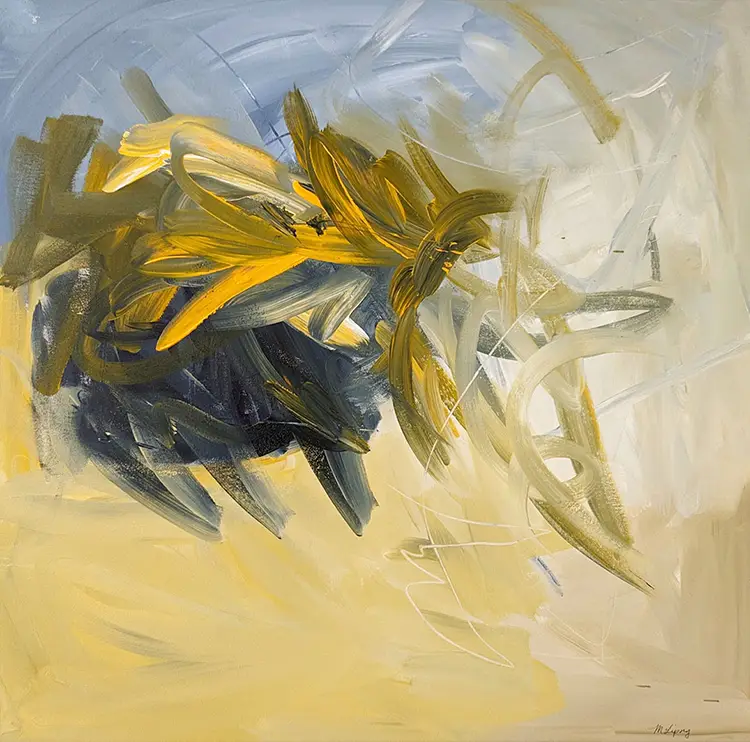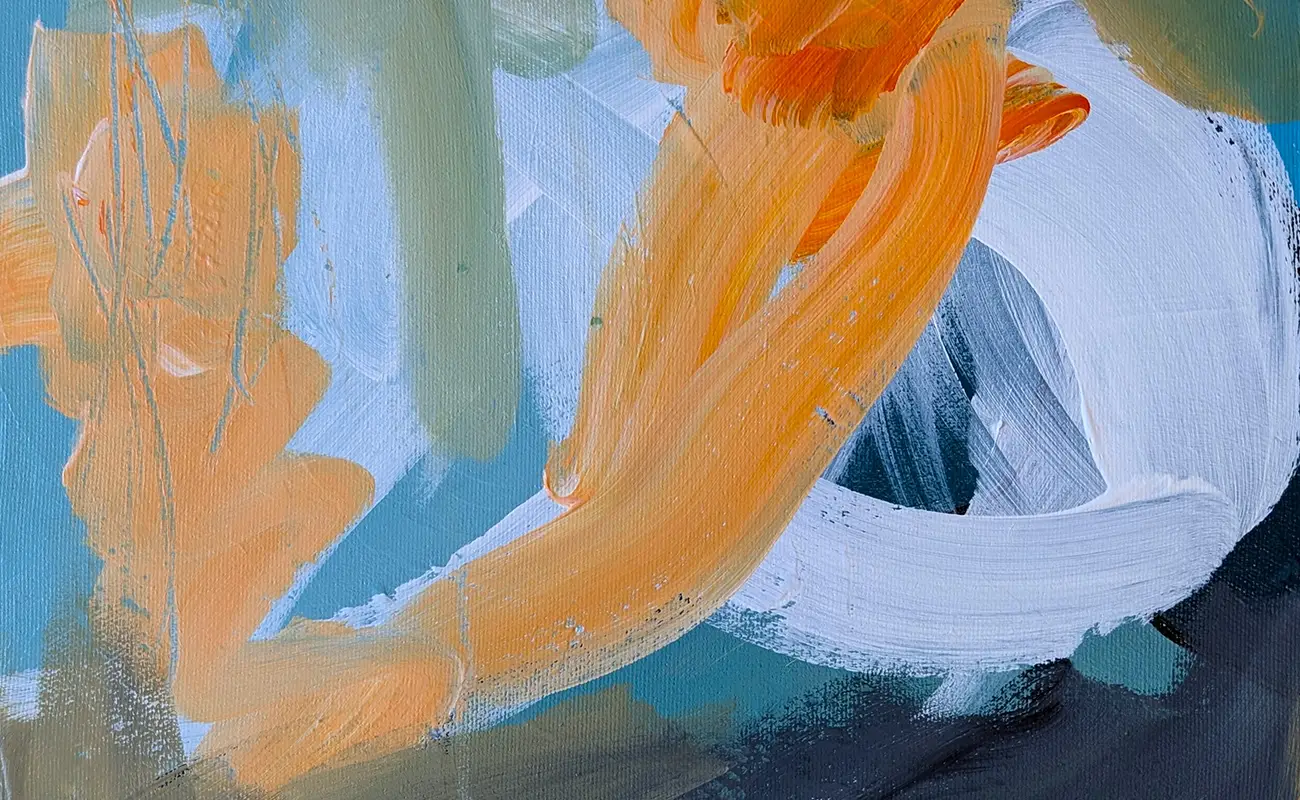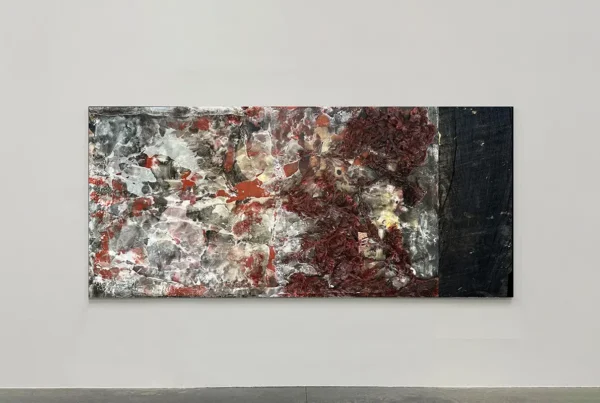“I declared myself to be an Artist with a capital A, which meant that I could create and explore without bounds.”
Unbound Beginnings: From Culinary Fire to Emotional Color
Margaret Lipsey’s journey into the art world was neither swift nor conventional. Based in Montreal, she identifies as a self-taught abstract artist whose creative language is fueled by color, gesture, and emotional energy. Her artistic roots are deeply entangled with her first profession as a chef, a background that continues to shape her intuitive process and sensory approach to painting. The culinary world taught her to trust transformation, to respect the unexpected, and to engage fully with texture and movement—principles she now transfers to canvas. What began in a Vermont culinary school in 2000 as an experiment with acrylics grew into a method of expressing unspoken truths, and eventually, a full-time practice. Leaving behind a 15-year culinary career, she committed to her art in 2016, channeling her years of observation, discipline, and emotional processing into each piece she created.
Lipsey’s evolution as an artist is deeply intertwined with pivotal personal experiences. Her work often serves as a mirror for her own emotional terrain, reflecting phases of motherhood, divorce, recovery from burnout, and her spiritual deepening. These elements converge into a rich exploration of feminine identity and resilience, particularly as experienced by women navigating their 40s and 50s. Her paintings have become more than aesthetic expressions—they are spaces of introspection and recognition, both for herself and her audience. She approaches the canvas with a sense of dialogue, allowing emotions like anger, sorrow, joy, and peace to take shape in brushstrokes or the edge of a palette knife. Painting, for Lipsey, is less an act of creation and more a conduit for emotional flow, a way to reconnect with oneself and invite others to do the same.
Her collections reveal a rhythm that alternates between calm reflection and bold assertion. Works like Serenity evoke softness and tranquility, inspired by lakeside scenes, while collections such as Borders Not Limits explore form and structure with more rigidity and contrast. In Wild, released the following year, Lipsey leaned into vibrant energy, allowing movement and color to collide more freely. Despite the differences in tone and palette, her commitment to exploring the interaction of emotion and color remains a constant. Each collection speaks to the viewer on a visceral level, encouraging a deeper confrontation with the self. Currently represented by Arte Cavallo and Cater Art Gallery in Montreal, she splits her creative time between Canada and occasional stays in Kalamazoo, Michigan, continuing to craft works that stir, provoke, and heal.
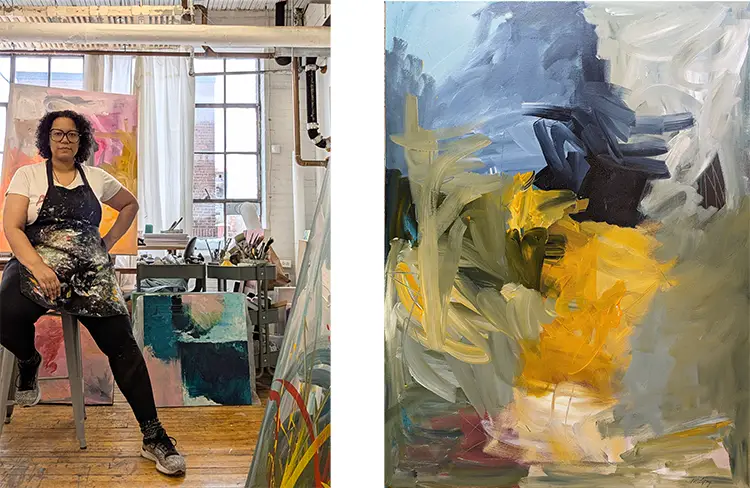
Margaret Lipsey: Declaring the Artist Within
Lipsey’s emergence as a professional artist was not born from a single moment of inspiration, but from years of inner searching and tentative experimentation. It wasn’t until she stepped away from her catering business that she discovered the mental space necessary for creative exploration. Just before turning forty, she made a profound declaration: she would identify herself as an Artist—with intention and with a capital A. This shift allowed her to approach art not as a hobby, but as a fundamental way of seeing and experiencing the world. Painting initially functioned as a form of meditation, a physical practice through which emotions she had buried could rise to the surface. Over time, it developed into an intuitive language—one that communicated what words could not.
Her career found its foundation in authenticity and experimentation. She began sharing her work online through short videos and studio notes on Instagram, using the platform as a tool not just for exposure but for personal reflection. Watching herself paint helped her understand her gestures and patterns, and posting her thoughts created a space for genuine engagement with other artists and collectors. The feedback loop was encouraging: viewers responded to the rawness and honesty of her content, and galleries began to take notice. Within her first year, she participated in a group exhibition and partnered with a gallery that brought her work to audiences across North America. Despite the rapid trajectory, her initial goals remained grounded—she simply wanted the right eyes on her art and the freedom to paint as much as possible.
One of the most pivotal works in her portfolio, The Only Way Out is Through, encapsulates the gravity of her transformation. This piece embodies the spiritual and emotional labor of facing discomfort head-on, a central philosophy in both her life and her art. Rather than skirting pain or masking uncertainty, Lipsey leans into them, uncovering clarity through confrontation. The painting stands as a personal emblem of courage, not only marking her five-year journey of healing and energy work but also offering viewers a roadmap for their own emotional reckoning. For Lipsey, to be an artist is to serve as both a witness and a guide—shining light on darkness, giving form to complexity, and speaking truths that others may struggle to voice.
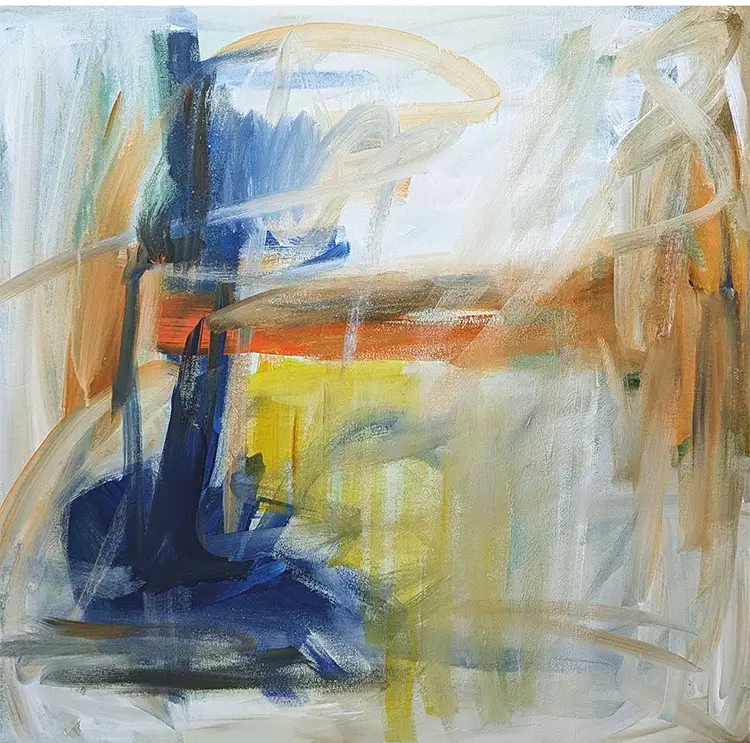
Color in Motion: The Heartbeat of Her Practice
Margaret Lipsey’s studio practice is driven by immersion—emotional, physical, and spatial. Her work relies on presence, demanding that she feel each emotion in its fullness and allow it to dictate the scale, movement, and tools of her expression. Her studio sprawls throughout her home, where canvases of all sizes and materials surround her. She often moves from small paper studies to large-scale floor paintings, letting her body respond to the intensity of what she’s feeling. Whether working on a 9×12 sheet or unrolling canvas across the ground, she follows instinct, letting each movement translate what she cannot articulate verbally. This flexibility allows for fluid transitions between projects, where production happens in surges, and rest is an essential counterbalance.
Tools play a meaningful role in her process, especially a set of handmade brushes crafted by her mother from different types of animal hair. These brushes create unpredictable textures, inviting spontaneity and disruption into her otherwise intuitive flow. Palette knives of varying sizes also feature prominently, offering another dimension of control and release. Her relationship with materials mirrors her themes—managing the balance between holding on and letting go. There is no single formula to how she approaches a canvas; each session is an encounter with emotion, where she allows grief to express itself gracefully, anger to find elegance, and joy to emerge without restraint.
Her collections often emphasize the shifting energy of limited color palettes, using variation in application and composition to evoke entirely different emotional tones. This choice underscores her belief that subtle shifts can produce profound emotional effects. Her themes frequently orbit around transformation—particularly emotional and feminine transformation. Lipsey has used her practice to process the dissolution of identity tied to roles like motherhood and marriage, leading to a deeper understanding of her own voice. Her work speaks to the experience of reclaiming that voice, encouraging others, especially women, to see their emotions not as weaknesses, but as guiding forces. Each brushstroke becomes a small act of reclamation, a permission slip to feel more fully and to speak more clearly.
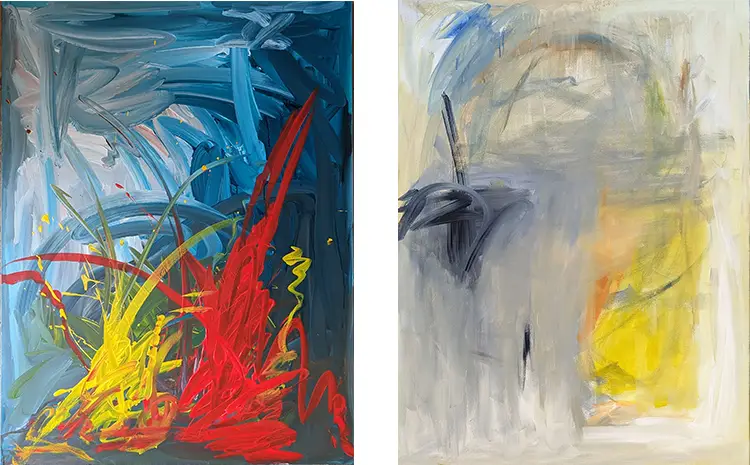
Margaret Lipsey: Looking Backward, Dreaming Forward
Approaching a significant milestone in her career, Lipsey is preparing to present a retrospective titled The Path Appears, marking ten years of professional painting. This exhibition will feature pivotal works from across her collections, including key pieces not intended for sale. Rather than celebrating a conclusion, the retrospective acts as a checkpoint—an opportunity to reflect on the evolution of her vision and anticipate what might lie ahead. The title captures a philosophy that has guided her from the beginning: that the creative journey is revealed step by step, and only by walking it do we begin to see where it leads. The retrospective is a tribute to persistence, self-discovery, and the art of becoming.
Looking ahead, Lipsey is imagining the expansion of her Wild collection, weaving together painted works with text and images from her earlier self-portrait project. This fusion will allow her to push the boundaries of her abstract language by incorporating more personal narrative and visual storytelling. She is also exploring the idea of writing another book, one that delves into the emotional and spiritual motifs that course through her work and life. These upcoming projects suggest a new era in her practice—one that is more interdisciplinary, integrating poetry, photography, and text to amplify the emotional resonance of her paintings.
Despite her deepening engagement with acrylics, Lipsey has always approached mediums with curiosity rather than loyalty. Her journey began with calligraphy and transitioned through watercolor, collage, and photography. Even her past projects in poetry inform the energy of her visual work. She sees each medium as a different lens through which to explore similar emotional landscapes, each contributing to a broader, more holistic expression. This openness ensures her work remains dynamic and ever-evolving, refusing to be confined by a single category or form. Whether she is painting, writing, or revisiting old pieces, Margaret Lipsey continues to explore what it means to truly feel—and to make art that helps others do the same.
